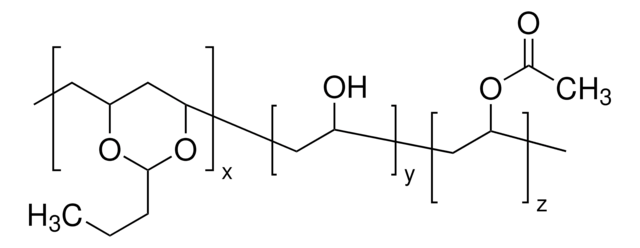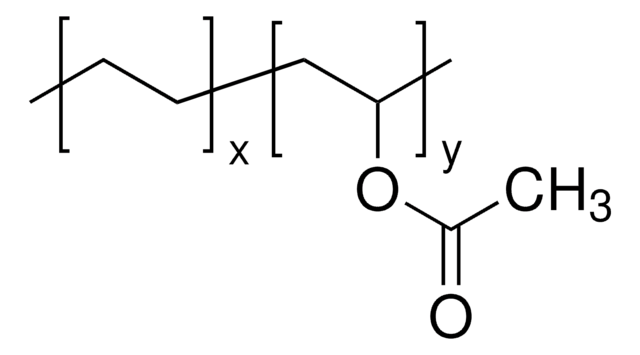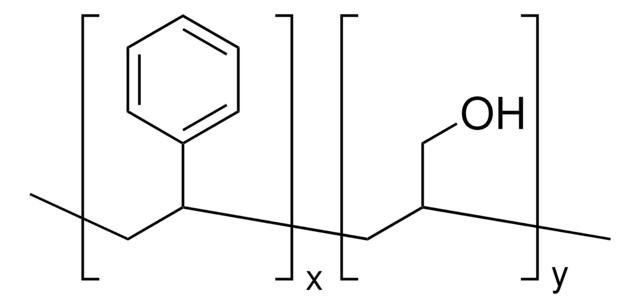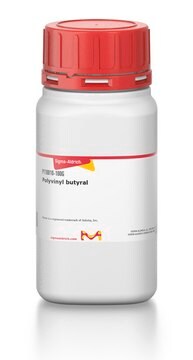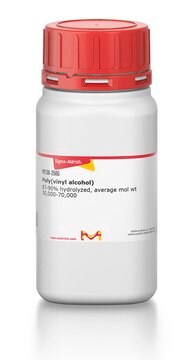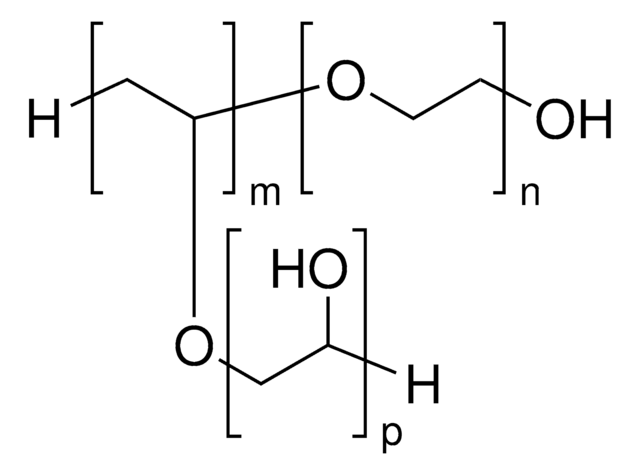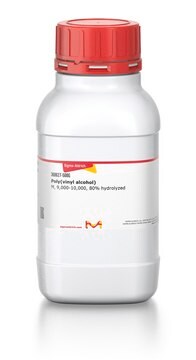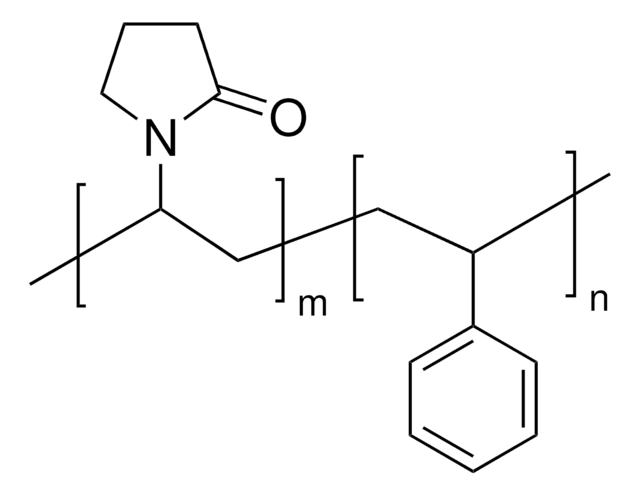414093
Poly(vinylalkohol-co-ethylen)
ethylene 32 mol %
Synonym(e):
PVA-co-PE
About This Item
Empfohlene Produkte
Form
pellets
Schmelzindex
3.8 g/10 min (210°C)
Zusammensetzung
ethylene, 32 mol %
Härte
100 (Rockwell M, ASTM D 785)
Verunreinigungen
<0.7% polymerized vinyl acetate
Übergangstemp.
Tm 183 °C (DSC peak)
Tg 69 °C
Löslichkeit
DMSO, water/n-propanol (1:1), and phenol: soluble
Dichte
1.19 g/mL at 25 °C
SMILES String
C=C.OC=C
InChI
1S/C2H4O.C2H4/c1-2-3;1-2/h2-3H,1H2;1-2H2
InChIKey
UFRKOOWSQGXVKV-UHFFFAOYSA-N
Suchen Sie nach ähnlichen Produkten? Aufrufen Leitfaden zum Produktvergleich
Verwandte Kategorien
Allgemeine Beschreibung
Anwendung
Sonstige Hinweise
Lagerklassenschlüssel
11 - Combustible Solids
WGK
WGK 3
Flammpunkt (°F)
Not applicable
Flammpunkt (°C)
Not applicable
Persönliche Schutzausrüstung
Eyeshields, Gloves, type N95 (US)
Analysenzertifikate (COA)
Suchen Sie nach Analysenzertifikate (COA), indem Sie die Lot-/Chargennummer des Produkts eingeben. Lot- und Chargennummern sind auf dem Produktetikett hinter den Wörtern ‘Lot’ oder ‘Batch’ (Lot oder Charge) zu finden.
Besitzen Sie dieses Produkt bereits?
In der Dokumentenbibliothek finden Sie die Dokumentation zu den Produkten, die Sie kürzlich erworben haben.
Kunden haben sich ebenfalls angesehen
Unser Team von Wissenschaftlern verfügt über Erfahrung in allen Forschungsbereichen einschließlich Life Science, Materialwissenschaften, chemischer Synthese, Chromatographie, Analytik und vielen mehr..
Setzen Sie sich mit dem technischen Dienst in Verbindung.
